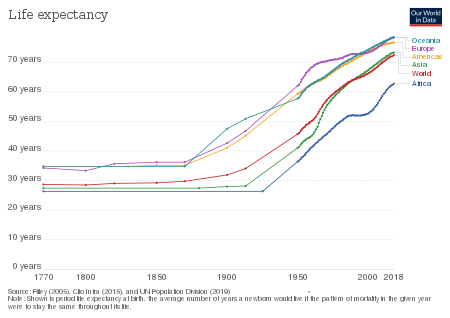
Technology, science and medicine in this age is WONDERFUL!!!
https://en.wikipedia.org/wiki/Life_expectancy
Human remains from the early Bronze Age indicate an LEB of 24.[4] In 2019, world LEB was 73.3.[5]. A combination of high infant mortality and deaths in young adulthood from accidents, epidemics, plagues, wars, and childbirth, before modern medicine was widely available, significantly lowers LEB. For example, a society with a LEB of 40 would have relatively few people dying at exactly 40: most will die before 30 or after 55. In populations with high infant mortality rates, LEB is highly sensitive to the rate of death in the first few years of life. Because of this sensitivity, LEB can be grossly misinterpreted, leading to the belief that a population with a low LEB would have a small proportion of older people.[6] A different measure, such as life expectancy at age 5 (e5), can be used to exclude the effect of infant mortality to provide a simple measure of overall mortality rates other than in early childhood. For instance, in a society with a life expectancy of 30, it may nevertheless be common to have a 40-year remaining timespan at age 5 (but perhaps not a 60-year one).
Until the middle of the 20th century, infant mortality was approximately 40–60% of the total mortality. Excluding child mortality, the average life expectancy during the 12th–19th centuries was approximately 55 years. If a person survived childhood, they had about a 50% chance of living 50–55 years, instead of only 25–40 years.[7] As of 2016, the overall worldwide life expectancy had reached the highest level that has been measured in modern times.[8]

Things to be grateful for: